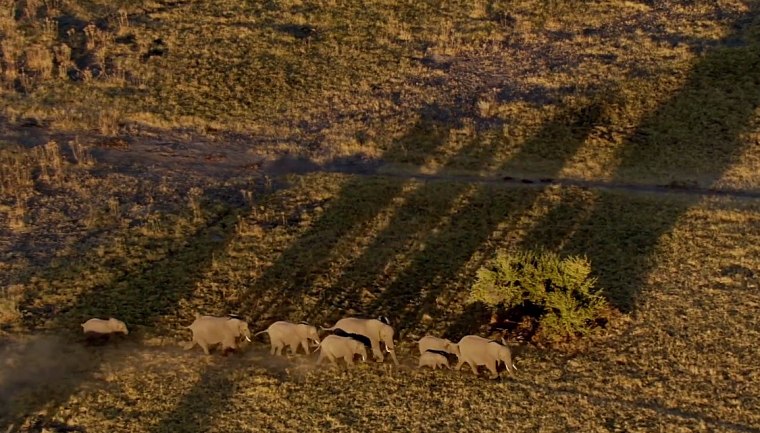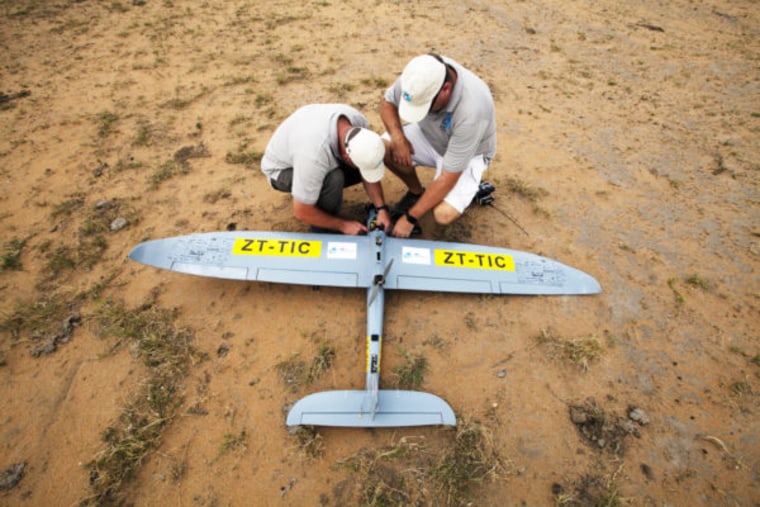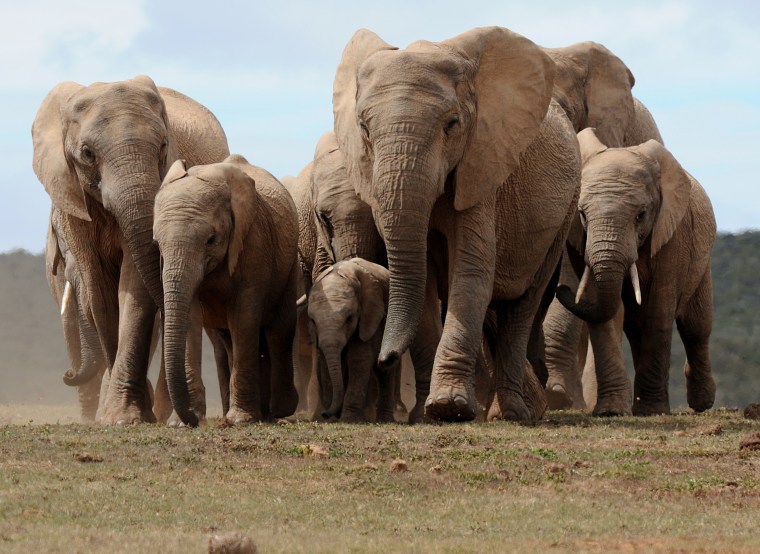African elephants are in trouble. Each year, tens of thousands of the enormous beasts are killed for their tusks, and conservationists fear they are on the road to extinction. But now, aerial drones, which first proved their value decades ago on military battlefields, are proving to be a key player in the ongoing battle against poachers.
For the past four years, anti-poaching "Bathawk" drones have been flying over national parks and game reserves in South Africa, Malawi, and Zimbabwe. Next month, they'll begin flying in Botswana as part of an anti-poaching campaign there.
The drones, made by the South African company UAV Drone Solutions (UDS), can stay aloft for two-and-a-half hours while relaying live video from their onboard cameras to ground-based crews up to 15 miles away. The crews then share surveillance information and videos with park rangers and local police.

Drone videos haven't yet resulted in any convictions for poaching in the area. But experts are convinced that the drones have helped deter the poaching of elephants as well as rhinos, which are often killed for their horns.
In the parks and reserves where the drones operate, elephant and rhino poaching has fallen significantly or stopped altogether, according to UDS co-founder Otto Werdmuller Von Elgg. He says drones are particularly effective at spotting poachers at night, when anti-poaching teams in helicopters are grounded.
Drones everywhere
Stopping the poaching of elephants and rhinos is just one dramatic example of the use of drones for wildlife conservation.
“There’s a lot of really interesting applications,” says Serge Wich, a U.K.-based ecologist who in 2012 co-founded Conservation Drones, a nonprofit that tracks drone projects around the world. “I'm always surprised by the great creativity of colleagues in using these systems to collect data in really novel ways, and there are certainly more options for the future.”
Wich himself uses drones to survey orangutan populations on the Indonesian island of Sumatra. Drones have also been used to spot river dolphins in the Amazon and whales in the Southeast Asian nation of Timor-Leste; to take a census of chimpanzees in Tanzania; and to map illegal logging in Indonesian rainforests.
Ecologist Lian Pin Koh, the other co-founder of Conservation Drones, uses drones in Australia to survey koalas at night, when their warm bodies show up vividly against the cooler tree foliage in thermal imaging videos. “You can see the gum trees lighting up like Christmas trees,” he says.

Drones are also being used to monitor the health of whales. In 2015, the Woods Hole Oceanographic Institution and the National Oceanic and Atmospheric Administration flew drones over humpback whales in Patagonia and Cape Cod to take samples of the moist breath that whales exhale when they surface. Scientists were able to identify a common set of microbes in the breath of healthy whales, and they hope the discovery will provide clues about the causes of whale strandings, which have been linked to respiratory illnesses.
Costs — and benefits
Mapping habitats and spotting wildlife are relatively simple propositions, but using drones for surveillance applications like anti-poaching remains “difficult and challenging,” Koh says. In part, that's because of the high cost of drones that are capable of staying in the air long enough to cover the vast areas of national parks and game reserves.

It costs about $20,000 to keep an anti-poaching drone crew in the field for one month, which includes accommodation and salaries as well as the cost of the drones and the support vehicle. But von Elgg says the costs are coming down. And there's no doubt that the benefit of using the drones is high, especially when it comes to saving elephants.
“There are naysayers who say it can’t work and it doesn’t work, and I say...please tell me what alternative there is at night?” he says. “Because the alternative is that you go to bed, and then you wake up in the morning and count the corpses.”

